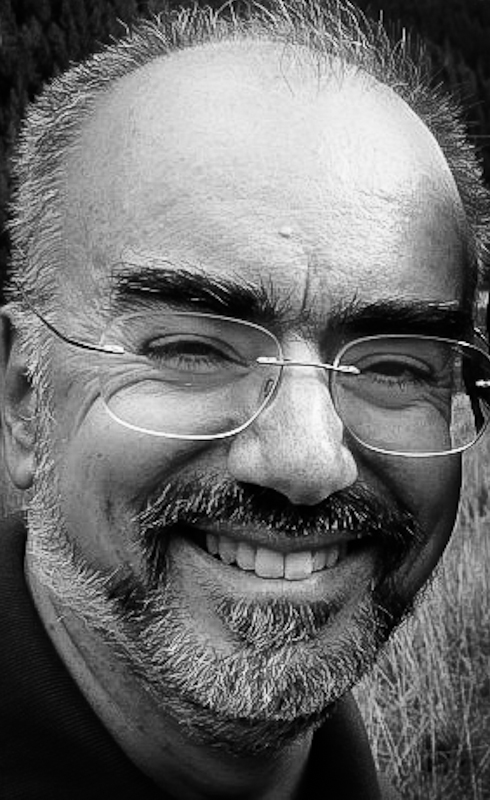
- 7 clarence grove
- horsforth
- leeds, LS18 4LA
- UK
- tel: 0113 258 1300
- order online
- www.editiondb.com
- info@editiondb.com
Di Gesu, Massimo (1970- )
'He is a composer working in a stylistic perspective of refined cultural reflection, focusing on the symbols hidden in the sound and in the musical syntax'. Quirino Principe (Sole 24 Ore)
Massimo Di Gesu attained the diplomas in Piano and Composition at the Conservatory of Milan. He studied composition with Bruno Bettinelli, and piano with Jole Mantegazza and Anita Porrini, one of the favourite pupils of Cortot and Benedetti Michelangeli.
Di Gesu's distinctive atonal idiom stems from an idea of musical discourse in which each sound is devised in such a way as to be perceived as necessary, inevitable, and having a gravitational attraction to every other
element of the texture (P. Bradley-Fulgoni, 2024, Composer and performer, RAE, p. 153). His works have been performed in venues such as La Scala (Milan), La Fenice (Venice), Weill Recital Hall (Carnegie Hall - New York), Salle Cortot (Paris), St. Martin in the Fields (London), Milan Auditorium, University of Milan, Teatro Dal Verme (Milan), Richter Memorial Apartment (Moscow).
Among his artistic partners: La Scala String Quartet, Wiener Virtuosen [soloists from the Wiener Philharmoniker], Ensemble Strumentale Scaligero [soloists from La Scala Orchestra], Virtuosi Italiani, Arcturus (Opera North), Maurizio Simeoli, Andrea Favalessa, Maurizio Zanini, Barbara Costa, Roberto
Miele, Mariangela Vacatello, Maria Semeraro, Peter Bradley-Fulgoni. It is from the collaboration with pianist Peter Bradley-Fulgoni that originated the pieces which, according to Renzo Cresti ("Musica presente",
2019, p. 775), are noteworthy expressions of his style: Dionisiaco (2016), FUlGidA, Das Eismeer (2018), Enigma, Rima Petrosa (2019).
Testimonials:
'For a long time I have known and esteemed Maestro Massimo Di Gesu whom I consider musician of high level and person of great cultural commitment'. Bruno Bettinelli
'The piece shows an impeccable sense of form, and a rare insight into the idiomatic resources of the instrument for which it was composed. At first, his musical thought could be traced back to the expressionism of Schönberg and the mastery of Berg. Actually, what is here perceptible is the mighty shadow of J. S. Bach'. Flavio Emilio Scogna (on Gradus ad responsum for piano)
'His work impressed the audience, even the youngest members of it, who are seldom used to "strong" music (which in this case, due to its emotional dramatic contrasts, was of the strongest). I was particularly compelled by the middle movement, which is definitely a manifestation of the artist's craftsmanship and talent to fascinate'. Quirino Principe (review of the world premiere of Verdigo for string quartet at
La Scala Theatre - Sole 24 Ore)
'His piano music has a unique tonal language [...] and represents a breath of fresh air in the doldrums of 'contemporary music' malaise'. Peter Bradley-Fulgoni ("The mystery of modern dissonance" - ARQ,
Cambridge University Press)
'The piece is very engaging, expressive and formally intriguing. I also appreciate the inspiringly idiomatic instrumental writing: in terms of performability and effectiveness, it seems a piece written by a guitarist.
Lapillus is an excellent achievement and an important contribution to the guitar repertoire.
Andrea Dieci
Links to recordings:
Geometria di un diletto (2011) for flute, clarinet, cello
Im Tempo Eines Walzers (2012) for wind quintet and string quintet
Lilith (2020) for piano
A view from the pier (2020) for string orchestra
Rima petrosa (2019) for piano
Verdigo (2013) for string quartet
Omaggio a Novaro (2011) for flute and piano
Trilogia dell'assenza (2000) for piano
Linea I – II (2009) for cello
Ansikte mot ansikte (2000) for string quartet

Compositions in catalogue |
Catalogue no. |
Price £ |
To buy click PayPal links below |
Composer/arranger |
||
Chamber Music series |
||||||
Mixed ensemble |
||||||
| Geometria di un diletto (fl, cl, vc) | 0703007 |
11.00 |
Massimo Di Gesu | |||